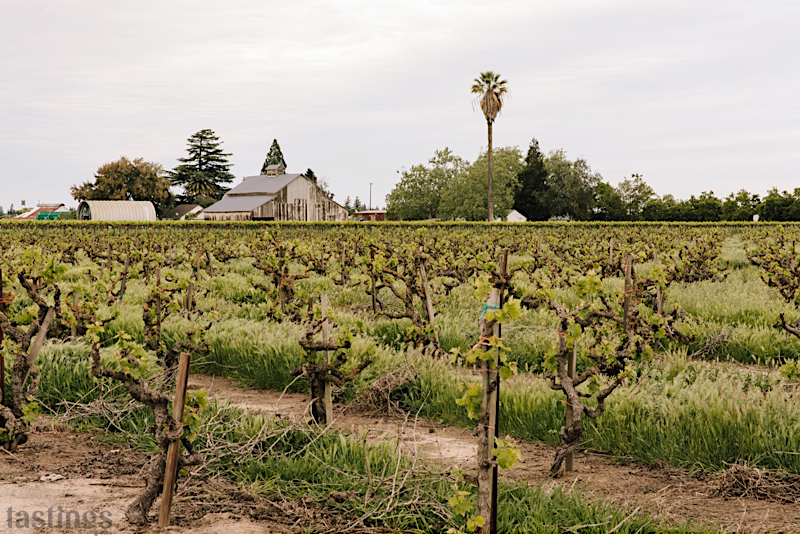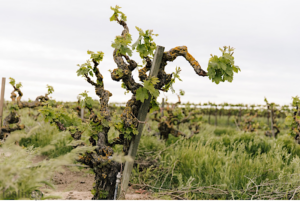
Old Vine Zinfandel “Credit: Lodi Winegrape Commission”
In our modern society we seem to always think new is better. We live in a world of trading in and trading up. The same can apply to grape vines. For one reason or another, older grape vines get ripped up. They are removed for a myriad of reasons, from their production value to land development, yet somehow, some vines survive. It is an age-old question – did the vines survive because they make great wine or do the vines make great wine because they survived?
The answer is both, neither, or…it depends.
Throughout the world there are pockets of old vines. These vines are used for making red wine, white wine, sweet wine, fortified wine, and sparkling wine. Old vines can be found in the countries of Chile, Portugal, the United States, France, Italy, Australia, South Africa, and Greece just to name a few. Some countries have regulations for the use of the term “old vine”. Many do not. Sometimes the regulation is voluntary.
So, what does old vine mean?
Without legal definition, old vines in most countries are considered to be vines thirty years or older. This is because the average vine is removed and replanted around age twenty-five, as that is when a decline in productivity begins to happen. As vines age, their yields begin to decline. These vines produce less fruit, yet the fruit that they do produce becomes much more concentrated, much like gaining wisdom with age. The vine may be older, but it is in some ways getting better. More concentration from old vine wines also means lower yields, and these wines are often sold at a higher price point than wine from young vines. Though the notion of wine is often romanticized, but wine is a business and profitability is what keeps wineries open. For the economics to work, consumers must accept paying more for the wine. When speaking with Stuart Spencer, executive Director of Lodi Wine Commission and grower and winemaker for St. Amant Winery, he noted that it can be difficult to convince the average consumer to spend $75 on a bottle of Zinfandel. While the age of old vines starts at thirty years old and can grow older than 150 years old, as seen in the Barossa Valley, it isn’t easy for vines to reach that age.
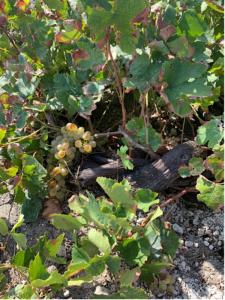
Old Vine Assyrtiko, Santorini
Greece is one of the few countries that has a legal definition for old vines. If used for wines from a PDO or PGI (Protected Designation of Origin/ Protected Geographic Indication), the vines must be a minimum of 40 years old, and they must be ungrafted.
On the island of Santorini, the average vine age is 80-100 years old. Santorini vines have the ability to age for several reasons. It is an island, which limits the number of pests and diseases that can enter the ecosystem. The island is not hospitable to many other crops, and the volcanic sandy soil made it difficult for phylloxera, a devastating root louse, to move through the land. The grape Assyrtiko makes wonderfully concentrated white wines with refreshingly crisp acidity and notes of citrus and stone fruit. The wines are fantastic, and unfortunately, the vines are in danger. Santorini is a tourist destination that is becoming increasingly popular. As more luxury hotels are built, vineyards are being wiped out by urban sprawl. Urban sprawl is taking the land and adding more pollution to the region. To protect the vines, Santorini has applied to become a UNESCO world heritage site. Achieving this would protect the vineyards and keep the urban sprawl at bay.
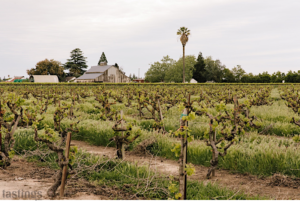
“Credit: Lodi Winegrape Commission”
Another area that is in danger of urban sprawl is Lodi, California. In Lodi California, east of San Francisco there are many old vine vineyards. The majority of them are Zinfandel. There are Zinfandel vines dating back to 1888. Vineyards in Lodi can be registered with the Historic Vineyard Society (HVS), a voluntary organization dedicated to preserving old vines in California. To register a vineyard with HVS, a minimum 1/3 of the vineyard must be traceable to plantings from 50 years ago. Many of these vines were planted before prohibition. The survival of Zinfandel in Lodi is directly tied to White Zinfandel wine. If it weren’t for large wineries buying every ounce of Zinfandel grapes that they could find, many of these vines would have been ripped out ages ago. Now that the vines are older, the growers need to be put in touch with winemakers that not only want to make old vine Zinfandel, but also are willing to pay more for the grapes. The Lodi Wine Commission helps to facilitate these matches. Unfortunately, this is not always enough. With labor costs skyrocketing and labor sources dwindling, some growers are ripping out vineyards in favor of orchards because orchards require less labor. Urban sprawl is the other issue threatening the vineyards – there is a Costco a half a mile east of some of the vineyards.
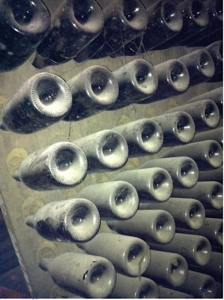
In France there is no legal definition for old vine or vieilles vignes. In Champagne, Pierre Gimonnet et Fils is a grower-producer (Récoltant-Manipulant or, RM) making some bottlings of their Champagne from old vines. They consider old vines to be over 40 years old. According to Didier Gimonnet, they are in no danger of urban sprawl taking their vineyard. It helps when the growers are also the winemakers. They have a vineyard parcel “le Bateau” dating back to 1911 planted in Cramant. The old vine parcels that they have are used in Special Club bottlings. Didier enjoys working with the old vines in the vineyards and finds the grapes give the wines natural harmony. Having the old vine wines gives depth and complexity to the range of wines that the house makes.
Much like the chicken or the egg question, the question of ‘are the vines old because they make great wine’ or ‘do they make great wine because the vines are old’, may never be truly answered. However, there is no denying the concentration that comes from old vines as they produce less fruit. There are many places in the world that have pockets of old vines and all of them are worth exploring. At the end of the day, what keeps these vines around is people buying and enjoying the bottles. Any time is the right time to enjoy an old vine wine and help secure the old vine legacy.
Recommended old vine wines to try:
Pierre Gimonnet: 2016 Special Club ‘Grands Terroirs de Chardonnay
Pear, Guava, Chalk
Bollinger: 2013 Vieilles Vignes Francasises
Quince, Hazelnut, Candied Lemon Peel
Santo Wines: 2020 Santorini Assyrtiko Grande Reserve
Golden Apple, Honey, Toast
Boutari: 2020 Santorini Assyrtiko
Jasmine, Mango, Wildflowers
St Amant: 2021 Mohr-Fry Old Vine Zinfandel
Blackberry, Raspberry, Baking Spice
Langetwins: 2017 Centennial Zinfandel
Raspberry, Clove, Licorice

